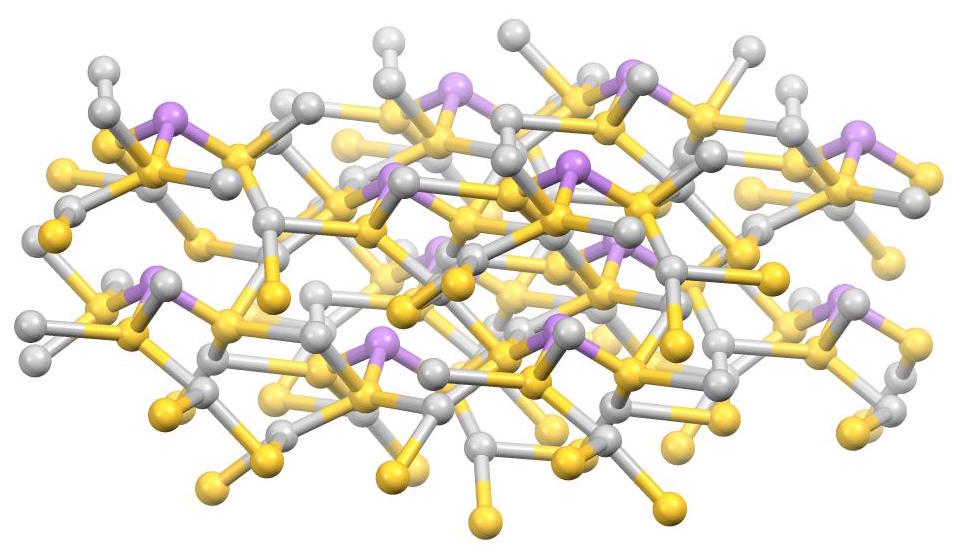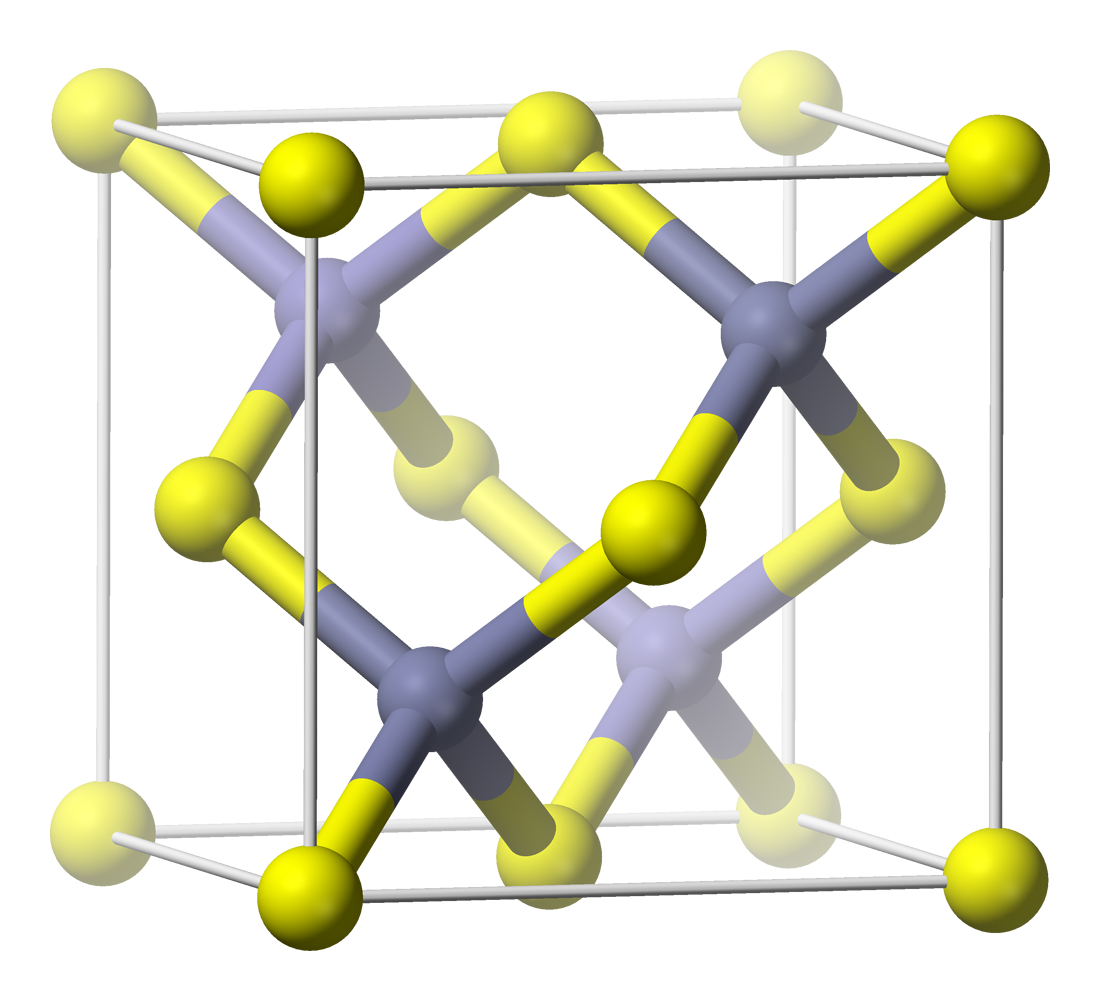|
Uchucchacuaite
Uchucchacuaite ( Ag Mn Pb3 Sb5 S12) is a rare sulfosalt mineral found in hydrothermal deposits. It was first described in 1984 for an occurrence in the Uchucchacua Mine, Oyon Province, Lima Department, Peru, and named for the mine. It has also been reported from mines in Hokkaido, Japan. It occurs with alabandite, galena, benavidesite, sphalerite, pyrite, pyrrhotite and arsenopyrite Arsenopyrite ( IMA symbol: Apy) is an iron arsenic sulfide (FeAsS). It is a hard ( Mohs 5.5–6) metallic, opaque, steel grey to silver white mineral with a relatively high specific gravity of 6.1. When dissolved in nitric acid, it releases el ... in the Peru deposit. References Webmineral Sulfosalt minerals Orthorhombic minerals Minerals in space group 47 {{sulfide-mineral-stub ... [...More Info...] [...Related Items...] OR: [Wikipedia] [Google] [Baidu] |
Sulfosalt Mineral
Sulfosalt minerals are sulfide minerals with the general formula , where *A represents a metal such as copper, lead, silver, iron, and rarely mercury, zinc, vanadium *B usually represents semi-metal such as arsenic, antimony, bismuth, and rarely germanium, or metals like tin and rarely vanadium *X is sulfur or rarely selenium and/or tellurium. The Strunz classification includes the sulfosalts in a ''sulfides and sulfosalts'' superclass. A group which have similar appearing formulas are the sulfarsenides (for example cobaltite (Co,Fe)AsS). In sulfarsenides the arsenic substitutes for sulfide anions whereas in the sulfosalts the arsenic substitutes for a metal cation.Klein, Cornelis and Cornelius S. Hurlbut (1985). ''Manual of Mineralogy'', 20th ed., John Wiley and Sons, New York . About 200 sulfosalt minerals are known. Examples include: File:Proustite (long prismatic crystal) - Chanarcillo, Copiapo Province, Atacama Region, Chile.jpg, As illustrated by this specimen of prous ... [...More Info...] [...Related Items...] OR: [Wikipedia] [Google] [Baidu] |
Sulfosalt Minerals
Sulfosalt minerals are sulfide minerals with the general formula , where *A represents a metal such as copper, lead, silver, iron, and rarely mercury (element), mercury, zinc, vanadium *B usually represents semi-metal such as arsenic, antimony, bismuth, and rarely germanium, or metals like tin and rarely vanadium *X is sulfur or rarely selenium and/or tellurium. The Strunz classification includes the sulfosalts in a ''sulfides and sulfosalts'' superclass. A group which have similar appearing formulas are the Sulfarsenide mineral, sulfarsenides (for example cobaltite (Co,Fe)AsS). In sulfarsenides the arsenic substitutes for sulfide anions whereas in the sulfosalts the arsenic substitutes for a metal cation.Klein, Cornelis and Cornelius S. Hurlbut (1985). ''Manual of Mineralogy'', 20th ed., John Wiley and Sons, New York . About 200 sulfosalt minerals are known. Examples include: File:Proustite (long prismatic crystal) - Chanarcillo, Copiapo Province, Atacama Region, Chile.jpg, As ... [...More Info...] [...Related Items...] OR: [Wikipedia] [Google] [Baidu] |
Matrix (geology)
The matrix or groundmass of a rock (geology), rock is the grain size, finer-grained mass of material in which larger grains, crystals, or clastic rock, clasts are embedded. The matrix of an igneous rock consists of finer-grained, often microscopic scale, microscopic, crystals in which larger crystals, called phenocrysts, are embedded. This porphyritic texture (geology), texture is indicative of multi-stage cooling of magma. For example, porphyritic andesite will have large phenocrysts of plagioclase in a fine-grained matrix. Also in South Africa, diamonds are often mined from a matrix of weathering, weathered clay-like rock (kimberlite) called "yellow ground". The matrix of sedimentary rocks is finer-grained sedimentary material, such as clay or silt, in which larger grains or clasts are embedded. It is also used to describe the rock material in which a fossil is embedded. Cementation All sediments are at first in an incoherent condition (e.g. sands, clays and gravels, beds of ... [...More Info...] [...Related Items...] OR: [Wikipedia] [Google] [Baidu] |
Arsenopyrite
Arsenopyrite ( IMA symbol: Apy) is an iron arsenic sulfide (FeAsS). It is a hard ( Mohs 5.5–6) metallic, opaque, steel grey to silver white mineral with a relatively high specific gravity of 6.1. When dissolved in nitric acid, it releases elemental sulfur. When arsenopyrite is heated, it produces sulfur and arsenic vapor. With 46% arsenic content, arsenopyrite, along with orpiment, is a principal ore of arsenic. When deposits of arsenopyrite become exposed to the atmosphere, the mineral slowly converts into iron arsenates. Arsenopyrite is generally an acid-consuming sulfide mineral, unlike iron pyrite which can lead to acid mine drainage. The crystal habit, hardness, density, and garlic odour when struck are diagnostic. Arsenopyrite in older literature may be referred to as ''mispickel'', a name of German origin. It is also sometimes referred to as mundic, a word derived from Cornish dialect and which also refers to a copper ore, as well as a form of deterioration in agg ... [...More Info...] [...Related Items...] OR: [Wikipedia] [Google] [Baidu] |
Pyrrhotite
Pyrrhotite (''Pyrrhus of Epirus, pyrrhos'' in Greek language, Greek meaning "flame-coloured"'')'' is an iron sulfide mineral with the formula Fe(1−x)S (x = 0 to 0.125). It is a nonstoichiometric compound, nonstoichiometric variant of FeS, the mineral known as troilite. Pyrrhotite is also called magnetic pyrite, because the color is similar to pyrite and it is weakly magnetic. The magnetism decreases as the iron content increases, and troilite is non-magnetic. Pyrrhotite is generally tabular and brassy/bronze in color with a Lustre (mineralogy), metallic luster. The mineral occurs with Mafic, mafic igneous rocks like Norite, norites, and may form from pyrite during Metamorphism, metamorphic processes. Pyrrhotite is associated and mined with other sulfide minerals like pentlandite, pyrite, chalcopyrite, and magnetite, and has been found globally. Structure Pyrrhotite exists as a number of polytypes of Hexagonal crystal system, hexagonal or monoclinic crystal symmetry; sever ... [...More Info...] [...Related Items...] OR: [Wikipedia] [Google] [Baidu] |
Pyrite
The mineral pyrite ( ), or iron pyrite, also known as fool's gold, is an iron sulfide with the chemical formula Fe S2 (iron (II) disulfide). Pyrite is the most abundant sulfide mineral. Pyrite's metallic luster and pale brass-yellow hue give it a superficial resemblance to gold, hence the well-known nickname of ''fool's gold''. The color has also led to the nicknames ''brass'', ''brazzle'', and ''brazil'', primarily used to refer to pyrite found in coal. The name ''pyrite'' is derived from the Greek (), 'stone or mineral which strikes fire', in turn from (), 'fire'. In ancient Roman times, this name was applied to several types of stone that would create sparks when struck against steel; Pliny the Elder described one of them as being brassy, almost certainly a reference to what is now called pyrite. By Georgius Agricola's time, , the term had become a generic term for all of the sulfide minerals. Pyrite is usually found associated with other sulfides or oxides in ... [...More Info...] [...Related Items...] OR: [Wikipedia] [Google] [Baidu] |
Sphalerite
Sphalerite is a sulfide mineral with the chemical formula . It is the most important ore of zinc. Sphalerite is found in a variety of deposit types, but it is primarily in Sedimentary exhalative deposits, sedimentary exhalative, Carbonate-hosted lead-zinc ore deposits, Mississippi-Valley type, and Volcanogenic massive sulfide ore deposit, volcanogenic massive sulfide deposits. It is found in association with galena, chalcopyrite, pyrite (and other sulfide mineral, sulfides), calcite, dolomite (mineral), dolomite, quartz, rhodochrosite, and fluorite. German geologist Ernst Friedrich Glocker discovered sphalerite in 1847, naming it based on the Greek word ''sphaleros'', meaning "deceiving", due to the difficulty of identifying the mineral. In addition to zinc, sphalerite is an ore of cadmium, gallium, germanium, and indium. Miners have been known to refer to sphalerite as ''zinc blende'', ''black-jack'', and ''ruby blende''. Marmatite is an opaque black variety with a high iron ... [...More Info...] [...Related Items...] OR: [Wikipedia] [Google] [Baidu] |
Galena
Galena, also called lead glance, is the natural mineral form of lead(II) sulfide (PbS). It is the most important ore of lead and an important source of silver. Galena is one of the most abundant and widely distributed sulfide minerals. It crystallizes in the Cubic (crystal system), cubic crystal system often showing octahedral forms. It is often associated with the minerals sphalerite, calcite and fluorite. As a pure specimen held in the hand, under standard temperature and pressure, galena is insoluble in water and so is almost non-toxic. Handling galena under these specific conditions (such as in a museum or as part of geology instruction) poses practically no risk; however, as lead(II) sulfide is reasonably reactive in a variety of environments, it can be highly toxic if swallowed or inhaled, particularly under prolonged or repeated exposure. Occurrence Galena is the main ore of lead, used since ancient times, since lead can be smelted from galena in an ordinary wood fire. G ... [...More Info...] [...Related Items...] OR: [Wikipedia] [Google] [Baidu] |
Alabandite
Alabandite or alabandine, formerly known as ''manganese blende'' or ''bluemenbachite'' is a rarely occurring manganese sulfide mineral. It crystallizes in the cubic crystal system with the chemical composition Mn2+ S and develops commonly massive to granular aggregates, but rarely also cubic or octahedral crystals to 1 cm. Etymology and history Alabandite was first described in 1784 by Franz-Joseph Müller von Reichenstein. The mineral name is derived from its supposed discovery locality at Alabanda (Aïdin) in Turkey. Occurrence Alabandite forms in epithermal polymetallic sulfide veins and low-temperature manganese deposits. It occurs with acanthite, calcite, chalcopyrite, galena, pyrite, quartz, rhodochrosite, rhodonite, sphalerite and native tellurium. Sometimes it was found in meteorites. Localities are several areas in Antarctica, Argentina, Armenia, Australia, Bolivia, Brazil, Bulgaria, Canada, China, Czech Republic, Finland, France, Germany, Ghana, Greece, Gr ... [...More Info...] [...Related Items...] OR: [Wikipedia] [Google] [Baidu] |
Hokkaido
is the list of islands of Japan by area, second-largest island of Japan and comprises the largest and northernmost prefectures of Japan, prefecture, making up its own list of regions of Japan, region. The Tsugaru Strait separates Hokkaidō from Honshu; the two islands are connected by railway via the Seikan Tunnel. The largest city on Hokkaido is its capital, Sapporo, which is also its only cities designated by government ordinance of Japan, ordinance-designated city. Sakhalin lies about to the north of Hokkaidō, and to the east and northeast are the Kuril Islands, which are administered by Russia, though the four most southerly are Kuril Islands dispute, claimed by Japan. The position of the island on the northern end of the archipelago results in a colder climate, with the island seeing significant snowfall each winter. Despite the harsher climate, it serves as an agricultural breadbasket for many crops. Hokkaido was formerly known as ''Ezo'', ''Yezo'', ''Yeso'', or ''Yes ... [...More Info...] [...Related Items...] OR: [Wikipedia] [Google] [Baidu] |
Lima Department
The Department of Lima (), known as the Department of the Capital () until 1823, is a department and region located in the central coast of Peru; the seat of the regional government is Huacho. Lima Province, which contains the city of Lima, the country's capital, is located west of the department; this province is autonomous and not under the jurisdiction of the regional government since 2003. History The remains of early Andean inhabitants, hunters and harpoon fishermen from more than 6500 years ago, are to be found in the department of Lima. These remains were found in Chivateros, near the Chillón River, and in various other places. These persons incorporated nets, hooks, farming, ceramics and weaving to their everyday objects. The inhabitants of the coast lived in the ''lomas'' and the valleys, where they built temples and dwelling complexes, leading to huge ceremonial centres, such as the Huacoy on the Chillón River; Garagay and La Florida on the Rímac River, Manch ... [...More Info...] [...Related Items...] OR: [Wikipedia] [Google] [Baidu] |







